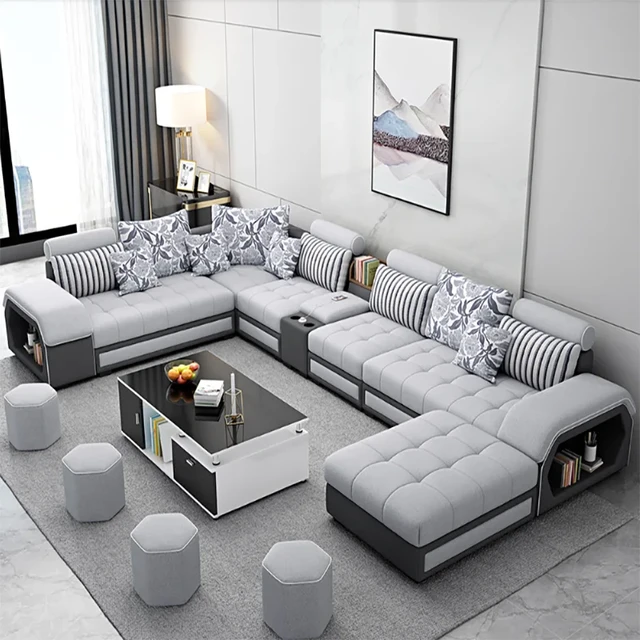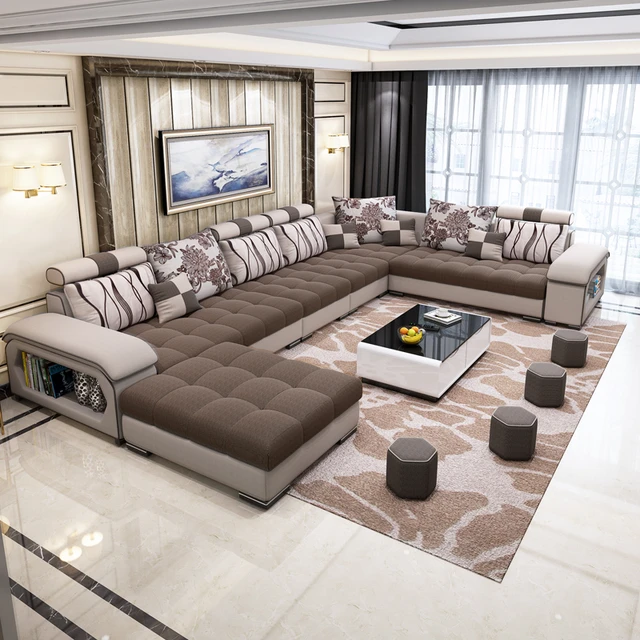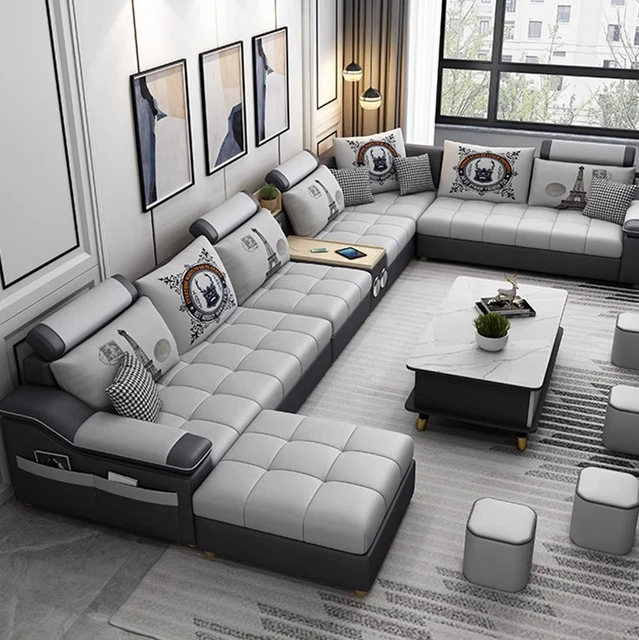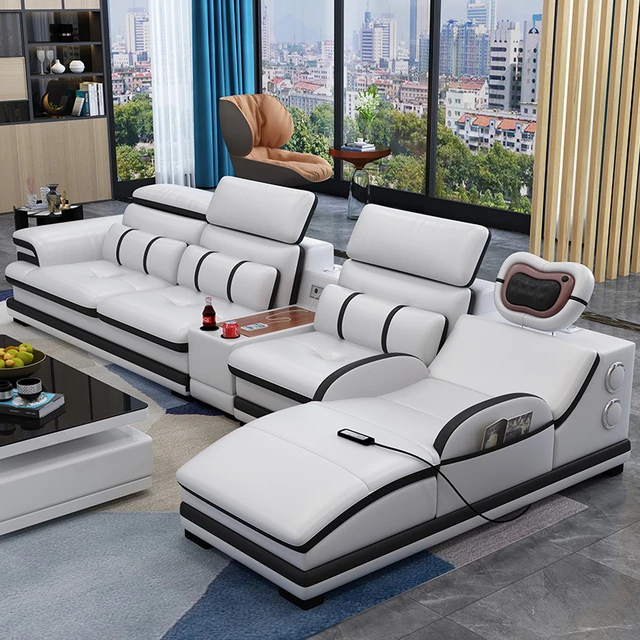 Introduction:
Introduction:
The length of a sofa is an important consideration when choosing furniture for your living space. Whether you have a small apartment or a spacious home, selecting the right sofa length can have a significant impact on the overall comfort and aesthetics of the room. In this comprehensive guide, we will explore the various aspects of sofa length, including its importance, standard measurements, considerations for different room sizes, and tips for choosing the right length for your needs. By understanding the factors involved in sofa length, you can make an informed decision and create an inviting and well-proportioned seating area.
 Here are some common sofa materials:
Here are some common sofa materials:
Sofas can be made from a variety of materials, each with its own characteristics and care requirements. Here are some common sofa materials:
Fabric:
Are popular and come in various types such as cotton, linen, polyester, velvet, or microfiber. Fabric sofas offer a wide range of colors, patterns, and textures. They may require regular vacuuming, spot cleaning, and occasional deep cleaning depending on the fabric.
Leather:
Leather sofas are known for their durability and timeless appeal. They can be made from different types of leather, including genuine leather, bonded leather, or synthetic leather. Leather sofas require regular dusting, wiping with a damp cloth, and conditioning to keep the leather supple and prevent cracking.
Microfiber:
Microfiber is a synthetic fabric made from tightly woven polyester fibers. It is known for its softness, stain resistance, and durability. Microfiber sofas are relatively easy to clean, often requiring a simple wipe-down with a damp cloth or mild detergent.
Importance of Sofa Length
Proportions and Balance:
The length of a sofa is crucial in achieving proper proportions and balance within a room.
It affects the visual appearance and flow of the space, as well as the overall comfort and functionality of the seating area.
Seating Capacity:
Sofa length directly impacts the number of people that can comfortably sit on the sofa.
Longer sofas generally offer more seating space, accommodating additional family members, guests, or allowing for stretching out.
Room Layout and Traffic Flow:
The length of a sofa affects the layout and traffic flow within a room.
A sofa that is too long can restrict movement and make the room feel cramped, while one that is too short can result in wasted space.
 Standard Sofa Length Measurements
Standard Sofa Length Measurements
Three-Seat Sofa:
The standard length for a three-seat sofa is generally between 76 inches (193 cm) and 90 inches (229 cm).
This size provides ample seating space for three individuals.
Two-seat sofas typically range from 58 inches (147 cm) to 72 inches (183 cm) in length.
These smaller sofas are ideal for smaller living spaces or as additional seating in larger rooms.
Apartment-Sized Sofa:
Apartment-sized sofas are designed to fit smaller living spaces.
They typically range from 72 inches (183 cm) to 78 inches (198 cm) in length.
 Considering Room Size and Layout
Considering Room Size and Layout
Small Rooms:
In smaller rooms, it is important to choose a sofa length that allows for comfortable movement and doesn’t overwhelm the space.
Opt for a sofa that is no longer than 72 inches (183 cm) to maintain a sense of proportion and to leave enough room for other furniture and circulation.
Medium-Sized Rooms:
Medium-sized rooms offer more flexibility in sofa length.
Consider a sofa between 76 inches (193 cm) and 84 inches (213 cm) for a balanced and comfortable seating arrangement.
Large Rooms:
Larger rooms can accommodate longer sofas, providing ample seating and creating a focal point.
Consider a sofa that is 90 inches (229 cm) or longer to fill the space and create an inviting seating area.
Section 4: Tips for Choosing the Right Sofa Length
Measuring the Space:
Before purchasing a sofa, measure the available space in the room, taking into account any obstacles or architectural features.
Consider the overall dimensions of the sofa, including armrest width and back height, to ensure a proper fit.
Visualizing the Layout:
Use painters tape or cardboard cutouts to visualize the size and placement of the sofa in the room.
This can help you determine if the sofa length is suitable and if it allows for comfortable movement and traffic flow.
Modular or Sectional Sofas:
Modular or sectional sofas offer flexibility in length by allowing you to customize the configuration to fit your space.
This can be beneficial in rooms with unique layouts or when you need to accommodate a specific seating capacity.
To clean a sofa, you can follow these steps:
Vacuum: Begin by using a vacuum cleaner with an upholstery attachment to remove loose dirt, dust, and debris from the sofa. Pay attention to the crevices, seams, and any removable cushions.
Spot cleaning: For any visible stains or spills on the sofa, act quickly and gently blot the area with a clean cloth or paper towel to absorb as much of the liquid as possible. Avoid rubbing, as it can spread the stain. If needed, use a mild detergent mixed with water according to the manufacturer’s instructions. Test the cleaner on a small, inconspicuous area first to ensure it doesn’t cause any discoloration or damage.
Deep cleaning: Depending on the fabric, you can deep clean the sofa using a steam cleaner or upholstery cleaner. Follow the manufacturer’s instructions for the specific cleaner being used. Be cautious not to oversaturate the fabric and allow sufficient drying time.
Cushion care: If your sofa has removable cushion covers, check the care label for washing instructions. Most covers can be machine-washed on a gentle cycle with a mild detergent. It’s best to air dry them or use a low heat setting in the dryer to prevent shrinkage or damage. If the cushions are not removable, spot clean them using a mixture of mild detergent and water, then wipe away the soapy residue with a clean, damp cloth.
Regular maintenance: To keep your sofa clean and fresh, regular maintenance is key. Vacuum or brush the sofa regularly to remove surface dirt and prevent it from settling into the fabric. Flip and rotate the cushions periodically to distribute wear evenly.
It’s important to refer to the care instructions provided by the manufacturer for your specific sofa model. If you’re unsure about cleaning certain areas or dealing with stubborn stains, it’s best to consult a professional upholstery cleaner for guidance.
 Conclusion:
Conclusion:
The length of a sofa plays a crucial role in creating a comfortable and visually pleasing seating area. By considering factors such as proportions, seating capacity, room size, and layout, you can choose the right sofa length for your specific needs.
Whether you have a small apartment or a spacious living room, finding the ideal sofa length will enhance the overall look and functionality of the space. Utilize the tips and measurements provided in this comprehensive guide to make an informed decision and create a well-proportioned and inviting seating area in your home.


